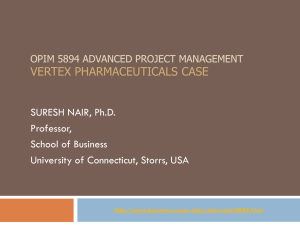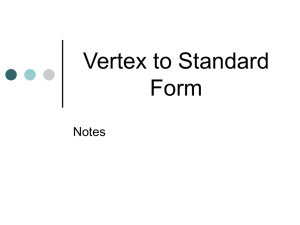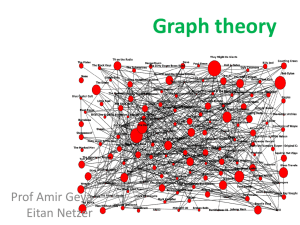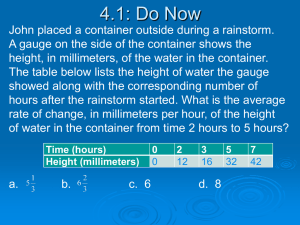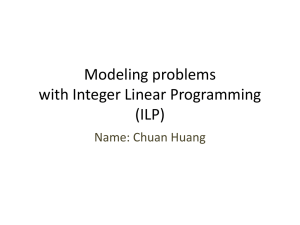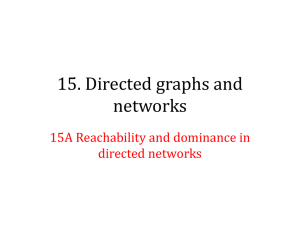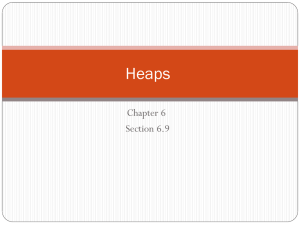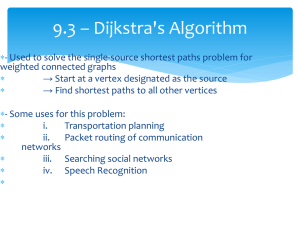OPIM 5894 Advanced project management
advertisement
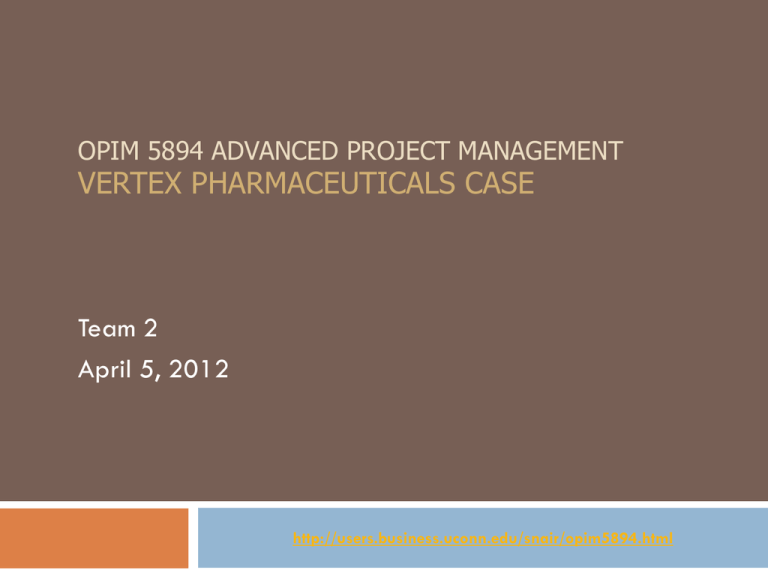
OPIM 5894 ADVANCED PROJECT MANAGEMENT VERTEX PHARMACEUTICALS CASE Team 2 April 5, 2012 http://users.business.uconn.edu/snair/opim5894.html Team 2 - Vertex Pharmaceuticals case 2 Issues Raised Drug development issues – selecting a portfolio of products In-house versus Licensing issues Types of risks – Target risk, Mechanism risk, Molecule risk, Market risk Real options analysis Team 2 - Vertex Pharmaceuticals case 3 Which of the 4 project portfolio options currently facing Vertex do you favor? VX-148: least scientific sizzle (IMPDH is a ‘validated target’; Vertex wants breakthroughs), already similar drugs on market, 2.7 million people affected by psoriasis, quick to market (2007), advanced development (phase II), least remaining development costs ($100MM), good success probability, low sales VX-702: might not be covered by insurance, possible toxicity issues, advanced development (phase IIa), low probability of success, late to market (2009), many attempts by competitors have failed, moderate remaining development costs ($300MM), good profit margin, moderate profits, cheap and easy to make, moderate projected sales VX-765: high manufacturing cost, high remaining development cost ($600MM), early in development (preclinical), moderate success probability, pralnacasan deal with Aventis, oral not injection, good anti-inflammatory drug has high potential, relatively quick to market (2008), good profit margin, good projected sales VX-950: complex and costly, early in development (preclinical), late to market (2009), low remaining development costs ($220MM), high probability of success, low profit margin, moderate sales Team 2 - Vertex Pharmaceuticals case 4 Which of the 4 project portfolio options currently facing Vertex do you favor? Our favorite is VX-765 to treat Rheumatoid Arthritis and Osteoarthritis Team 2 - Vertex Pharmaceuticals case 5 Specifically, which two projects would you advance in development? Why? Show analysis. VX-765 VX-950 Team 2 - Vertex Pharmaceuticals case 6 Criteria Sales Potential Financial Return Risk Time to market Wall Street Reaction Breadth of Potential Applications Follow-on opportunities SUM (select the two highest) Probability of success Probability of two being successful Probability of two failing VX 148 VX 702 2.5 8.5 5 9 5 4.75 3 37.75 .38 7.75 6.25 2 7 6 2 4 35 .35 .133 .403 VX 765 VX 950 10 4 4 5 7 9 8 47 .47 5.25 6 5 5 8 6 4 39.25 .39 .1833 .3233 Team 2 - Vertex Pharmaceuticals case 7 Would you license out the two others not chosen or keep them as backup? The license option is advantageous to a small firm in a rapidly changing market. Licensing Would increase cash flow which would allow completion of the chosen projects. This may be difficult to negotiate. Team 2 - Vertex Pharmaceuticals case 8 How much should Vertex management rely on quantitative methodologies (such as real option valuation) versus more qualitative approaches? ROV is best for late-stage development compounds, but it doesn’t handle early-stage development compounds well Vertex should rely more on ROV and less on qualitative approaches if late-stage decisions need to be made; the advantage of ROV making predictions in an uncertain environment is maximized because the uncertainties are fewer in late-stage decisions ROV is good for starting discussions, but it is relative and not absolute; very dependent on input assumptions and choices Vertex should rely more on qualitative approaches and less on ROV for long-term strategic analyses and early-stage development compound decisions
